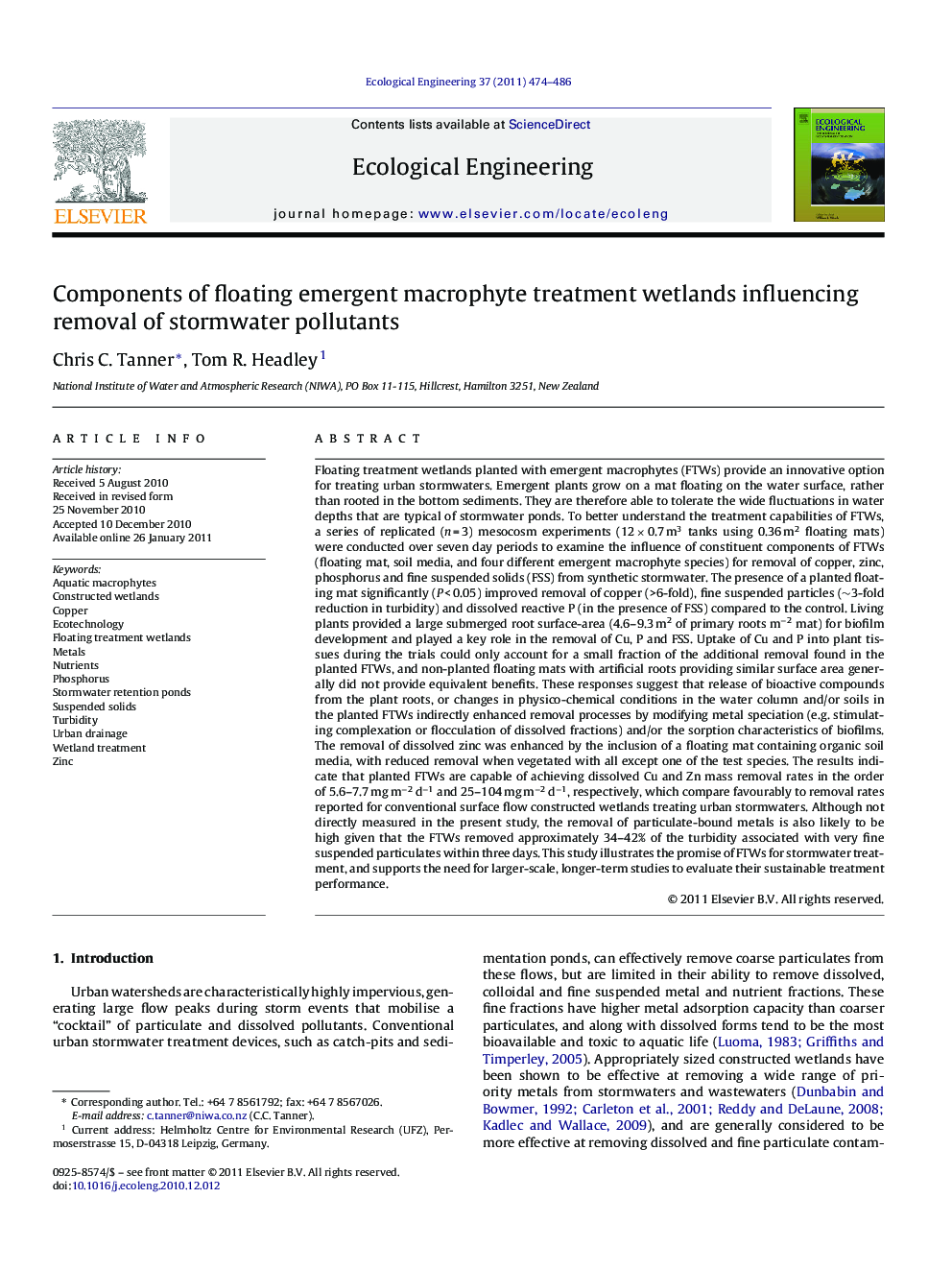| کد مقاله | کد نشریه | سال انتشار | مقاله انگلیسی | نسخه تمام متن |
|---|---|---|---|---|
| 4390228 | 1305162 | 2011 | 13 صفحه PDF | دانلود رایگان |

Floating treatment wetlands planted with emergent macrophytes (FTWs) provide an innovative option for treating urban stormwaters. Emergent plants grow on a mat floating on the water surface, rather than rooted in the bottom sediments. They are therefore able to tolerate the wide fluctuations in water depths that are typical of stormwater ponds. To better understand the treatment capabilities of FTWs, a series of replicated (n = 3) mesocosm experiments (12 × 0.7 m3 tanks using 0.36 m2 floating mats) were conducted over seven day periods to examine the influence of constituent components of FTWs (floating mat, soil media, and four different emergent macrophyte species) for removal of copper, zinc, phosphorus and fine suspended solids (FSS) from synthetic stormwater. The presence of a planted floating mat significantly (P < 0.05) improved removal of copper (>6-fold), fine suspended particles (∼3-fold reduction in turbidity) and dissolved reactive P (in the presence of FSS) compared to the control. Living plants provided a large submerged root surface-area (4.6–9.3 m2 of primary roots m−2 mat) for biofilm development and played a key role in the removal of Cu, P and FSS. Uptake of Cu and P into plant tissues during the trials could only account for a small fraction of the additional removal found in the planted FTWs, and non-planted floating mats with artificial roots providing similar surface area generally did not provide equivalent benefits. These responses suggest that release of bioactive compounds from the plant roots, or changes in physico-chemical conditions in the water column and/or soils in the planted FTWs indirectly enhanced removal processes by modifying metal speciation (e.g. stimulating complexation or flocculation of dissolved fractions) and/or the sorption characteristics of biofilms. The removal of dissolved zinc was enhanced by the inclusion of a floating mat containing organic soil media, with reduced removal when vegetated with all except one of the test species. The results indicate that planted FTWs are capable of achieving dissolved Cu and Zn mass removal rates in the order of 5.6–7.7 mg m−2 d−1 and 25–104 mg m−2 d−1, respectively, which compare favourably to removal rates reported for conventional surface flow constructed wetlands treating urban stormwaters. Although not directly measured in the present study, the removal of particulate-bound metals is also likely to be high given that the FTWs removed approximately 34–42% of the turbidity associated with very fine suspended particulates within three days. This study illustrates the promise of FTWs for stormwater treatment, and supports the need for larger-scale, longer-term studies to evaluate their sustainable treatment performance.
Journal: Ecological Engineering - Volume 37, Issue 3, March 2011, Pages 474–486